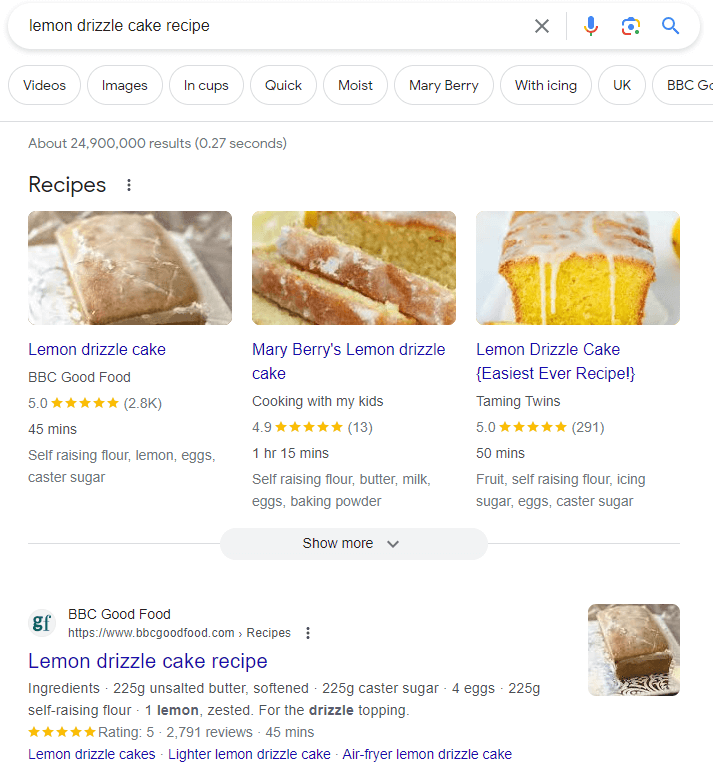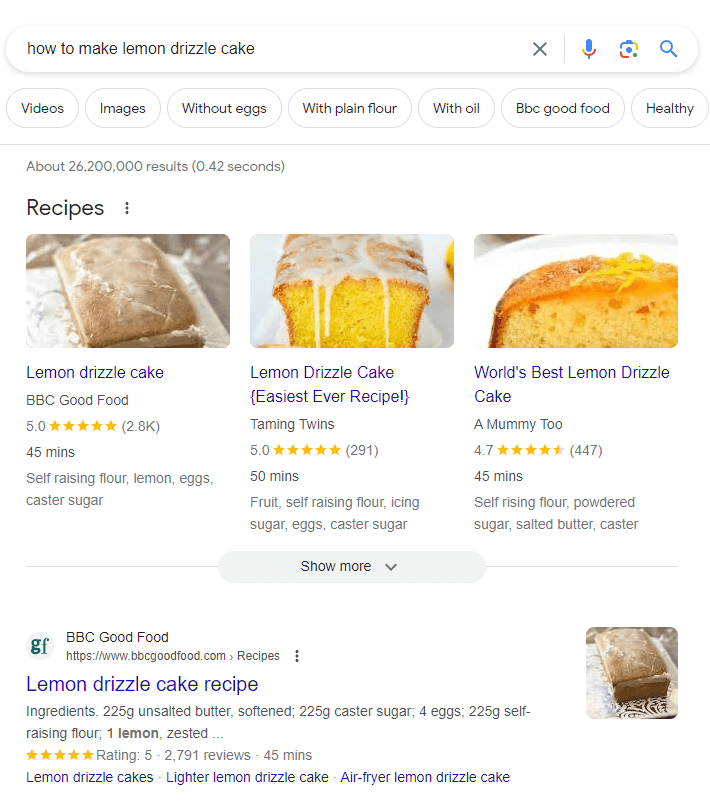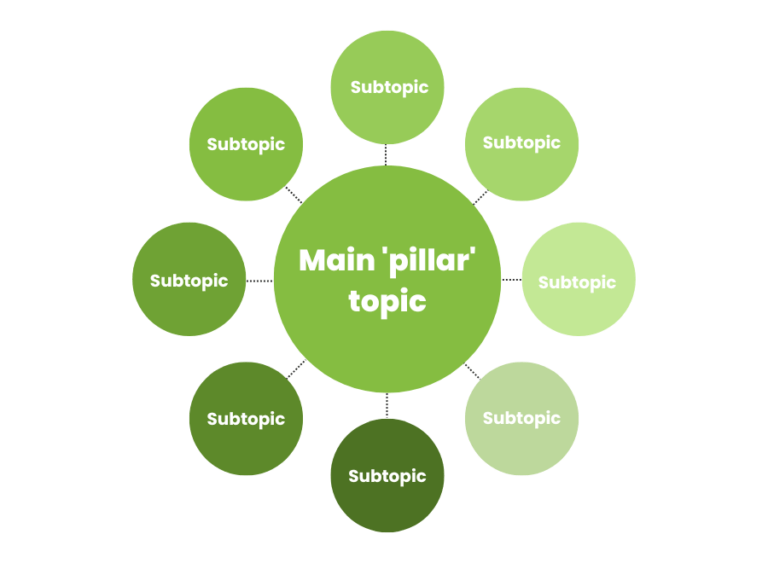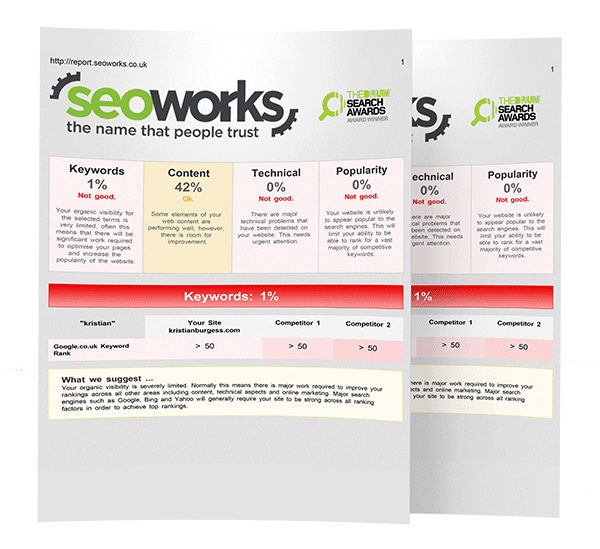SEO is Evolving: How Can You Keep Up?
SEO is constantly evolving; however in recent years we have seen some of the most significant changes to the search landscape in a long time.
Google frequently releases updates designed to improve the search experience for users. These updates take into account the changing demands of users, as well as new technologies available.
The most notable updates in recent years have centred around ‘people-first content’ – content created with the user at the forefront. Long gone are the days of exact match keywords and keyword density, it’s all about semantics and user intent these days.
The Helpful Content Update (August 2022) most notably addressed this, designed to reward sites that:
“present helpful, reliable information that’s primarily created to benefit people, not to gain search engine rankings”
Google
And, it sounds like there is more to come. Danny Sullivan, the Google Search Liaison, recently said that big changes are coming to search rankings, but that if you are doing the right thing to help users then you should be ok.
But what does all of this mean for website owners, businesses and those working in SEO? – and most importantly, how can you make sure you don’t fall behind?
Contents:
Old vs New: How is SEO Changing?
We already know that Google is focused on providing user-first content. This means that there is less focus on traditional SEO techniques.
Previously you may have found yourself carrying out keyword research, uncovering a list of keyword terms and then working your way through to create or optimise content for each term based on search volume.
Whilst there is still value to carrying out keyword research, the focus should be on discovering how and why users search, not what.
This allows you to uncover topics that are important to your industry and customer base, allowing you to create a range of content around that topic. You don’t need to worry so much about exactly matching keyword phrases. With more focus on users, semantics have been pushed to the forefront.
For example, a user may search for ‘lemon drizzle cake recipe’ or ‘how to make lemon drizzle cake’. The search results look virtually the same because Google understands the user’s end goal is the same (even if the page content doesn’t include exact keyword matches).


Learn more with our guide to Semantic SEO.
There is also a move towards addressing customer pain points to ensure content is as valuable and useful to users as it can be. Of course, this can also be great for businesses; directly addressing and answering customer pain points with your product or service can lead to more conversions.
Google has also recently updated their E-A-T guidelines to include an additional E for experience. This once again is designed to prioritise the most helpful content for users. Sites that write about topically relevant areas to their niche, utilising their expertise and first-hand experiences are likely to perform better than those that are just writing to satisfy search demand, rather than providing real value.
Download our E-E-A-T SEO Checklist to see if your content aligns with Google Guidelines.
Finally, as Google experiments with SERP features, incorporating technologies such as AI to improve the search experience, creating content that is well-structured and uses a variety of methods to display information can be a great way to satisfy the changing SERP landscape and improve user experience.
Summary
| Old | New |
|---|---|
| What are users searching for? | How and why are users searching? |
| Exact match keyword targeting | Semantic keyword targeting |
| Generic content | Pain-point focused content |
| Non-authoritative content | E-E-A-T prioritised |
| Copy-focused | UX-focused |
Why is SEO Changing?
Ultimately, SEO is changing to benefit users.
If we continue to use only traditional SEO techniques then we will not be aligned to Google’s ambitions for search. By embracing the changes you can:
- Be more competitive
- Better match search intent
- Provide more value for your users
- Build authority in key areas of your industry
- Increase conversions
Be more competitive
It is Google’s algorithm that decides which pages get to rank top for which search queries. So it goes without saying that if you do not align to Google’s best practice guidelines, you are unlikely to rank well for your target terms.
By embracing the changing search landscape you can grow your organic presence and perform more competitively in the search results.
Those who adapt more quickly are likely to be the biggest winners here – the SERPs are becoming ever more competitive, so see these changes as opportunities to capitalise on, rather than challenges to overcome.
Better match search intent
The changes make it easier to better match the search intent of users. In the days of black hat SEO techniques, top ranking pages rarely offered value to users, but rather just mentioned the target keyword more than other websites.
As Google’s ability to understand content and semantic links becomes better, there is less reliance on keyword matches and word counts, giving greater flexibility in the way you communicate information.
You can take advantage of visual and interactive features, offer short-form content and target new SERP features to better answer user queries.
Provide more value for your users
As alluded to above, embracing new SEO techniques can allow you to drive additional value for your users.
The internet is becoming ever more saturated. Content that goes above and beyond to add value is going to be rewarded more highly than content that simply regurgitates readily-available information.
Value can come in almost any format, from visual page elements, tools and resources to unique data, research, and content written by those with first hand experience in the subject matter.
Build authority in key areas of your industry
Taking a user-first approach forces you to really think about what it is your users want to know, and how best to communicate that. In doing this, you can promote trust with your users, building out your authority in key topic areas.
Google rewards content created by those with first-hand experience and expertise in the subject matter. They have even recently added a ‘Perspectives’ search filter option, which only shows content written by those with first-hand experience.
You can capitalise on this to drive growth and authority in your niche. This can lead to improved rankings, increased brand awareness, trust and visibility, as well as increased conversions.
Increase conversions
By putting the user at the forefront of search, you put yourself in a better position to generate leads and conversions.
If a user’s query is satisfied, they are much more likely to convert than users who still seek additional information.
By also taking UX into account, you can make sure your user’s experience on your website is as easy as possible, utilising CRO tactics to filter users to conversion pages and actions.
What Can You Do to Keep Up?
So you’re more than willing to embrace the new approach to SEO but not quite sure how?
We’ve summarised 5 ways you can elevate your approach to content with easy action points for each.
- Focus on building out key content clusters
- Create a point of difference
- Add a personal touch
- Focus on engagement
- Repurpose, reuse, recycle
Focus on building out key content clusters
Content clusters are made up of pillar pages and supporting pages. They are topically relevant pieces of content interconnected through internal links. The pillar page is the main topic of the cluster, whilst supporting pages cover offshoots of the main topic.

The purpose of content clusters is to build topical authority around key areas. By internally linking between pages, you can strengthen the authority of pages within the cluster, as well as aiding user navigation. This provides users with a clear route through the cluster, presenting them with all the necessary information needed to convert.
When creating content for your site, you should think about main topic areas first and then carry out analysis into additional complementary pages.
For maximum impact, it is advisable to build out one topic cluster at a time so that it can be working as intended before moving onto the next cluster. If you try to build out many different clusters at once, it will take longer to develop authority in each topic, since adding content to the site will also take more time. It may also be more difficult to go back and remember where to add internal links between pages.
To make building content clusters more manageable, it could be a good idea to map them out beforehand. Create a document with all current and planned pages within a topic cluster and ensure that each page within the cluster is linked to the pillar page or other relevant pages.

Action points
- Think about your key topic areas first
- Map out your content clusters
- Focus on building out one content cluster at a time
- Use your content cluster map to identify internal linking opportunities
Create a point of difference
Creating a point of difference in your content allows it to stand out from competitors.
Taking an interesting angle demonstrates to Google that you are writing from a fresh perspective and providing additional value for your users. It can also help to improve click through rate from the search results by enticing users to click.
SEO writing doesn’t have to be boring; the latest updates mean you can now be more flexible with the way you write. It is pointless just stating information and facts that can be found on every other ranking page for a search term. You have to provide more if you want to outrank them.
To do this, first of all look at the competitor results for your target search query:
- What do they each have in common?
- What do they do well?
- What do they do not so well?
- Do you have any additional information to offer?
- Do you have a better way to present information?
- Can you add first-hand experience or expertise?
A great way to make sure your content provides as much value for your target market as possible is to map out each of the potential pain points of the subject area and address them within your copy. You should also map out any possible objections and address these.
Let’s look at an example.
You are writing a piece of content on: ‘How to complete a tax return’
Potential pain points to include and address:
- Navigating tax documents
- Lack of knowledge around tax law and regulations
- Avoiding penalties for mistakes or miscalculations
- Meeting deadlines
- Keeping organised records
Potential objections to include and address:
- Fear of making errors
- Complexity of the process
- Time consuming
- Procrastination
You are then in a position to plan out the structure of your content, incorporating these where appropriate.
Think about if there is a way you can display your content that will provide additional value for the user. You may want to include videos or visual content such as summary tables, graphs and diagrams.
You should also think about user experience on the page:
- Does the page load quickly?
- Are there any intrusive interstitials?
- Does the page pass the Core Web Vitals assessment?
- Does the page load properly on mobile?
If you take into consideration the above points, you can put together a piece of content that stands out from the rest.
Action points
- Analyse competitor results
- Think about where you can provide additional value
- Map out pain points
- Map out potential objections
- Look for opportunities to add visual page elements
- Consider UX
Add a personal touch
With the addition of the perspectives feature in Google search and ‘Experience’ in E-E-A-T, there is more call for content with a personal touch.
This could be content written from a first-person perspective, content that incorporates expert comments and quotes, or even the inclusion of user generated content such as reviews and testimonials.
If we return to our example of ‘How to complete a tax return’ – we could include expert comments from an accountant to provide advice and support to users.
We could also write from the perspective of someone completing their tax return for the first time, following the step by step instructions providing insight into how they found it along the way. This is a great way to incorporate pain points other customers may face.
This informational page may link to a Tax Software commercial page – on this page, we could include reviews and user testimonials of how they found using the software when completing their return.
Action points
- Identify opportunities to use expert authors or comments
- Write from first-hand experience if possible and appropriate
- Identify scope to include user-generated content e.g. reviews and testimonials
Focus on engagement
Traffic to a site is all well and good but you need to think about what you want that traffic to translate to. Are you looking to build brand awareness, generate leads or maximise sales?
For all of these things, engagement is key.
One of the ways you can create a point of difference in your content whilst promoting engagement is by including some kind of resource for your users. This could be an interactive tool, a downloadable checklist or help sheet – anything that can be used to assist them with the subject matter.
Similarly, we have talked about visual page elements. These can promote engagement by making content more easily digestible.
You should also incorporate call to actions (CTAs) to direct your user to the specific action you want them to take off the back of your content. This could be to get in touch, it could be to visit a product page, to sign up to a newsletter or even download a resource.
Our example blog on ‘How to complete a tax return’ could include a downloadable checklist for each step. It could also include a diagram of a completed tax return offering helpful insight and tips. Users could then be directed to the Tax Software page via a CTA button.
Action points
- Think about page elements or resources that would complement your content
- Decide what action you want users to take when they’re on your site
- Include CTAs on the page that align with the above
Repurpose, reuse, recycle
One of the ways you can make your content work harder for users, and for your organisation is to repurpose it for various channels.
A good idea may be to promote content through social media. Whilst social signals are not a direct ranking factor, they can signal to Google the usefulness of content and sharing on social media can help to generate additional links. This can lead to improved page authority and trust which does aid ranking.
To repurpose content for social media, you may want to take a shareable snippet or quote from the piece, or push any visual elements, linking to the main content within the caption.
You might also want to create a complementary video that could be shared on social channels such as Instagram, TikTok and YouTube.
Another way you can repurpose content is for digital PR purposes. Digital PR strives to generate links and build brand awareness. By creating a point of difference in your SEO content, you may find you have newsworthy pieces to outreach.
The table below shows how different page elements could be repurposed for socials and outreach.
| Page element | Repurposing applications |
|---|---|
| Data/statistics | Create an infographic |
| Expert quotes/comments | Respond to relevant journalist request |
| Unique page angle | Outreach blog itself |
| Video/visual page elements | Post to social channels |
You can also repurpose content at different times of year. You might write a blog on a seasonal topic. Ensuring this is updated each year at the relevant time helps to keep the content fresh and ranking well when interest peaks.
You could outreach a blog multiple times per year to generate more backlinks. For example, a blog on ‘The biggest transfer fees in football’ may be outreached during the January transfer window and during the summer transfer window, as it will be more topically relevant at these times and therefore more likely to gain interest.
The best way to align your SEO efforts with other marketing channels is to communicate. Share your plans with relevant teams to see if there is anything of value they may be able to use. Similarly, you may be able to gain new content ideas for organic growth from other areas.
Action points
- Communicate with other teams to align strategies
- Think about which page elements could be repurposed for social media
- Think about which page elements could be repurposed for outreach
- Think about which times of year topics will be most relevant for repurposing
Key Takeaways
In conclusion, SEO is constantly evolving, rewarding those sites that put the user front and centre. To keep up you must adjust your SEO strategy to make sure you provide valuable information, prioritise E-E-A-T and search intent.
To do this you should focus on building out key topical clusters within your niche, capitalising on your expertise and experience in subject matters and creating additional resources where appropriate to support engagement on site.
Overall, the message is clear: embracing the changes in SEO is crucial for staying competitive, better aligning with user intent, and ultimately driving value for both users and businesses.
Use our handy checklist to see how your content measures up:
- Have you identified and mapped out key content clusters?
- Is content in each cluster linked effectively?
- Does your page content offer a unique angle/take on the topic?
- Does your page add anything additional to already ranking pages?
- Have you utilised expert input or first-hand experiences in your content?
- Do you utilise user-generated content?
- Have you thought about the best format to communicate information to match search intent?
- Have you included visual page elements?
- Have you defined clear CTAs?
- Can you repurpose or reuse content for other marketing channels?
Making sure you adhere to Google’s best practice guidelines whilst ensuring content is user-centric, well-optimised and engaging can be complex, especially in a shifting search landscape. We have a proven track record of delivering high quality SEO campaigns to drive meaningful organic growth.
Find out more about our SEO services, or get in touch with the team.


